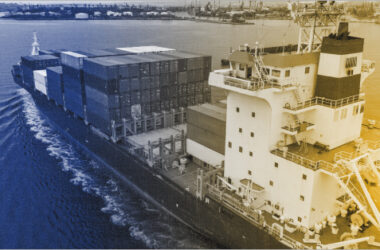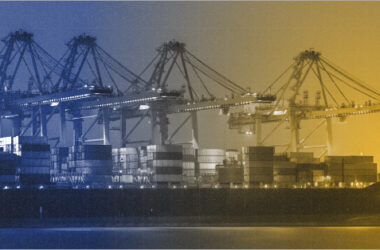Every voyage is a risk in this huge world of maritime commerce. Ships sail through rough seas, volatile weather and deliver precious cargo across continents. To shipowners and marine operators, safety of assets and operations is non-negotiable. It is there that Marine Insurance comes in as an essential safety net against financial storms of the sea.
The Time Policy is one of the most commonly used and viable Marine Insurance policies available in the market. But, what precisely is a Time Policy and why do shipowners and marine businesses like it? In this blog, we will discuss this and beyond. We will take a closer look at its definition, characteristics, extent and importance.
Time Policy in Marine Insurance : What It Is
A Time Policy in Marine Insurance is one policy where the insurance coverage is provided for a specific time period, as opposed to covering a single journey or voyage. In plain words, it covers a ship or a vessel over a certain time period – usually 12 months – notwithstanding the number of voyages that are made during that period.
Section 27(2) of the Marine Insurance Act, 1963 (India) defines a time policy as a contract, the subject of which is insured over a specific time period. This is unlike a Voyage Policy where the insurance coverage is attached to a particular journey- such as between Mumbai and Singapore.
The protection in a Time Policy is time-based as opposed to voyage-based. It makes sure that the ship is insured in the course of navigation, at anchor, during repairs, or when waiting to load cargo.
Salient Features of a Time Policy
A Time Policy is associated with a range of unique characteristics that render it especially appropriate to shipowners and operators who are involved in ongoing maritime operations.
- Coverage Duration: The policy has a set time period and the most common period is for 1 year. But ,based on the requirements of the operation, insurers can issue policies which are shorter or longer.
- Different Type of Interests Covered: Time Policies usually insure vessels, hull and machinery, freight, and liabilities that may be caused due to the operation of the vessel.
- Premium Calculation:The calculation of the premium is done by considering the insured value of the ship, its routes of trade, its age and its history of claims. The higher the risk exposure and period of insurance coverage, the greater the premium will be.
- Continuous Protection: As the coverage is not limited to any particular trip, the vessel is insured on multiple trips throughout the policy period.
- Renewal and Extension Clauses: Time Policies typically include clauses on renewal or automatic extension in case the ship is at sea when the policy expires.
These capabilities render Time Policies optimal when it comes to large shipping companies and vessel owners who work round-the-clock and are not based on a single-contract basis.
Scope of Coverage Under Time Policy
The scope of a Time Policy is broad, ensuring that shipowners get extensive protection against marine perils during the insured period.
Risks Covered Include:
- Perils of the sea such as storms, rough weather, and collisions.
- Fire or explosion onboard.
- Piracy or theft of ship machinery or parts.
- Grounding or sinking of the vessel.
- Damage due to negligence of the crew or master.
Additionally, Time Policies can be extended to cover war risks, strikes, and malicious damage, often through separate clauses like the Institute War Clauses (Hulls) or Institute Time Clauses.
Importantly, the coverage also extends to periods of repair or port stays, offering protection even when the vessel isn’t in active operation. This continuous protection is one of the most significant advantages of the Time Policy model.
Duration and Validity of Time Policy
A Time Policy usually covers a period of 12 months, starting from a specific date and time mentioned in the policy document. The coverage automatically ceases at the expiry date and time unless an extension clause applies.
If the ship happens to be at sea when the policy period ends, most insurers allow a short extension — usually until the vessel reaches its next port — under the “continuation clause.”
However, the Marine Insurance Act, 1963, limits the duration of a Time Policy to no more than 12 months, except for extensions granted for completing an ongoing voyage.
The coverage can also terminate earlier under certain circumstances, such as:
- Change of ownership or flag registration.
- Change in the vessel’s use or trade route without notice.
- Deviation or delay beyond permitted limits.
Therefore, although Time Policies are a reliable source of protection, it is important to stay within the terms of the policy in order to have uninterrupted coverage.
Time Policy and Voyage Policy : A Tabular Comparison
In order to get a clearer picture of the peculiarities of a Time Policy, one would like to compare it to its counterpart — the Voyage Policy.
| Basis of Difference | Time Policy | Voyage Policy |
| Basis of Insurance Coverage | Covers a vessel for a fixed time period | Provides coverage for a vessel or cargo for a specific journey |
| Coverage Duration | Usually 12 months | From the starting port to the destination port |
| Applicability | Primarily for ships and hulls | Mainly for cargo shipments |
| Premium Calculation | Depends on time and vessel risk | Depends on voyage distance and route risk |
| Flexibility | Provides coverage for multiple voyages | Provides coverage for only one voyage |
| Preferred By | Shipowners and operators | Cargo owners or exporters |
In essence, a Time Policy is suitable for ongoing marine operations, while a Voyage Policy fits one-time shipments or charter arrangements.
Advantages of Time Policy in Marine Insurance
A Time Policy offers multiple advantages that make it the go-to choice for shipowners, operators, and maritime businesses engaged in continuous trade.
- Continuous and Comprehensive Coverage: The vessel remains insured for the entire policy period, whether it is sailing, anchored, or under repair.
- Simplified Administration: Shipowners don’t need to purchase a new policy for every voyage, reducing paperwork and time.
- Cost Efficiency: For frequent voyages, a Time Policy often works out cheaper than buying multiple voyage-specific policies.
- Flexibility Across Routes: Ships operating across multiple regions or trade routes enjoy consistent protection without geographical restrictions.
- Ease of Renewal: Policy renewals can be timed seamlessly, ensuring there’s no gap in coverage during operations.
For a shipping business running year-round, a Time Policy ensures financial and operational stability — allowing owners to focus more on trade and less on administrative complexities.
Limitations and Exclusions of Time Policy
Despite its wide coverage, a Time Policy isn’t without limitations. Understanding its exclusions is crucial for risk management.
Common Exclusions Include:
- Wilful misconduct or negligence by the shipowner.
- Ordinary wear and tear, corrosion, or gradual deterioration.
- Damage from unseaworthy conditions (unless unknown to the insured).
- Losses from illegal trade or smuggling.
- War and nuclear risks (unless separately insured).
Moreover, there are time limitations–they are usually one year long and any extension of the coverage should be agreed upon explicitly. It also can experience gaps during renewals, particularly in the event that the ship is on the water when one policy expires but the other has not commenced.
Shipowners should avoid conflicts, and to prevent such a situation, they should make sure to renew the coverage on time, declare the areas of trade properly, and take the safety compliance standards seriously.
Example: How Time Policy Functions in Real Life
Consider an example of a shipping company, OceanWave Logistics Pvt. Ltd., which has a cargo ship traveling between India and Southeast Asia several times a year. OceanWave does not purchase individual voyage policies on each trip, but rather buys a 12-month Time Policy to cover the hull, machinery, and freight interests of the vessel.
The vessel is hit by a serious storm in the South China Sea during the period when the policy was in effect, causing partial damage to the hull. Because the incident happened during the period covered by the insurance, the company is entitled to receive compensation under the Time Policy– although the voyage was not explicitly mentioned in the policy schedule.
This flexibility shows the practical viability of Time Policies in the real world as well as its financial stability, particularly to the shipping companies that conduct regular operations
Legal and Regulatory Framework Governing Time Policies
In India, marine insurance — including Time Policies — is governed by the Marine Insurance Act, 1963, which is largely based on the UK Marine Insurance Act of 1906.
Key provisions relevant to Time Policies include:
- Section 27(2): Defines a Time Policy as one where the subject matter is insured for a definite period of time.
- Section 62: States that a Time Policy cannot exceed 12 months, except where necessary to complete an ongoing voyage.
- Policy Clauses: Indian insurers often use internationally recognized wordings such as the Institute Time Clauses (Hulls) issued by the Lloyd’s Market Association, ensuring global consistency in coverage terms.
This legal framework has helped to maintain consistency between Indian Marine Insurance operations and international standards, offering the policyholders consistency and reliability.
How to Choose Between Time Policy and Other Marine Insurance Policies
The choice of the appropriate marine insurance policy is based on various operational and financial considerations. A Time Policy is rendered appropriate for:
- Shipowners that operate throughout the year.
- Organisations running fleets or charter vessels on a regular basis.
- Companies that need coverage for numerous trade routes and ports..
But when the insured interest is cargo and the operation is periodic, then a Voyage Policy or a Mixed Policy (voyage and time) might be more suitable.
Under Time Policies, insurers often assess risk by examining:
- Age, type and condition of the vessels.
- Crew competency and maintenance level.
- Trade routes and environmental risks.
- History of previous losses and claims.
Making a wise decision guarantees maximum protection and cost-competitiveness for the insured.
Final Thoughts:
A Time Policy in Marine Insurance is not a mere contractual document, it is a kind of a shield against the uncertainties of world trade and it safeguards vessels, freight and business continuity during the uncertain times. Insuring ships over a fixed time span dispels the inconvenience of insuring each individual voyage. This also provides constant protection, and simplifies risk management for the shipping companies.
In a world where significant financial losses can be caused by a single mishap during transit, the Time Policy can be considered a reliable protection. To ship owners, it is not merely a matter of compliance but a matter of assurance, sustainability and control over their maritime ventures.
Companies doing any marine business must periodically reevaluate their insurance package, gauge their frequency of operations and make sure that they have the appropriate time-based coverage in place. This is because, in shipping, time is money, and protection is peace of mind.








